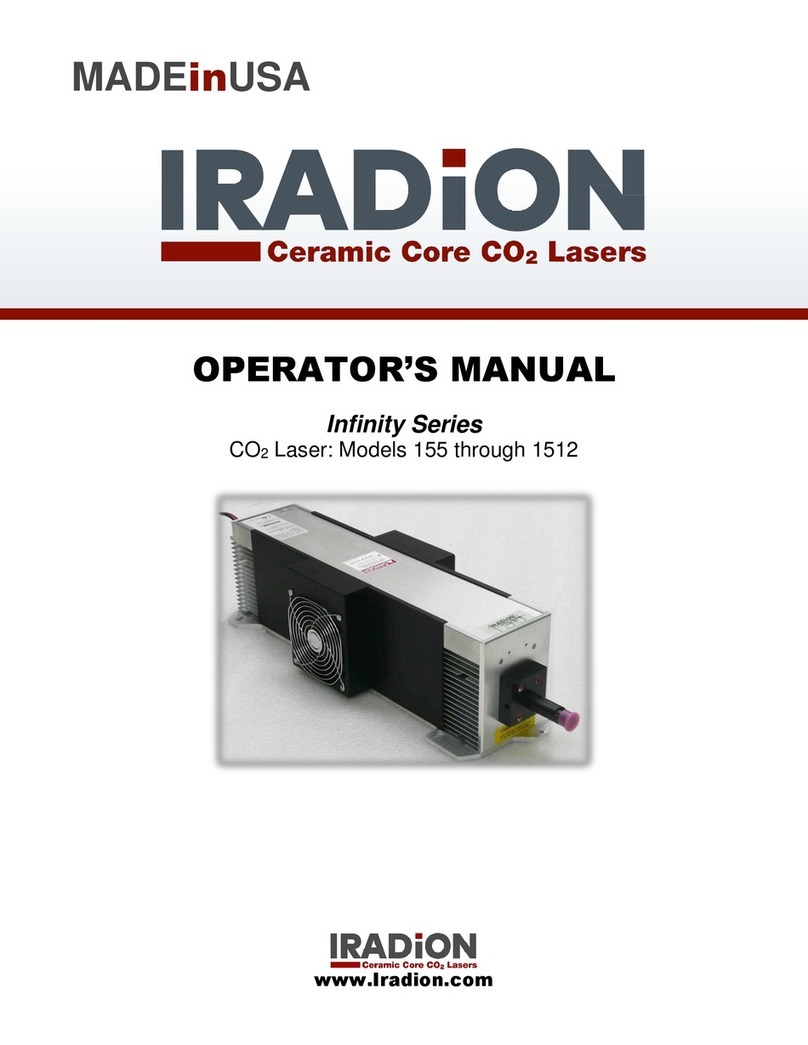3 | P a g e
Table of Contents
OPERATOR’S MANUAL.............................................................................. 2
Table of Contents........................................................................................ 3
Hazard Information ..................................................................................... 4
Terms...................................................................................................................4
General Hazards.......................................................................................... 4
General Hazards.......................................................................................... 5
Other Hazards.............................................................................................. 5
Infinity Series Label Locations.................................................................. 6
Laser Safety................................................................................................. 7
Declaration of Conformity.......................................................................... 8
Declaration of Conformity.......................................................................... 9
Introduction ............................................................................................... 10
CDRH.......................................................................................................... 10
Available Safety Features ........................................................................ 10
System Overview ...................................................................................... 11
Technical Drawings .................................................................................. 13
Mounting.................................................................................................... 14
Specifications............................................................................................ 15
Electrical Connections, Laser ................................................................. 16
“W” Type Lasers ................................................................................................17
Operation of Unit....................................................................................... 18
Tickle Pulse........................................................................................................19
Laser Command Signals ...................................................................................19
System Test.......................................................................................................20
Laser Indicator Lights ........................................................................................21
G = CPLD (Complex Programmable Logic Device) failure................... 21
Beam Expanders and Other First Optical Surfaces.............................. 22
Cooling Specifications .......................................................................................24
Water Filter.........................................................................................................24
Setting the Flow Rate ........................................................................................24
Condensation.....................................................................................................25
The D200/D250 Power Supply and Air Pump Unit................................. 26
Electrical Ratings...............................................................................................26
Environmental Conditions..................................................................................26
The D200/D250 Power Supply and Air Pump Unit................................. 27
Mechanical Outline ............................................................................................28
Connecting the Power Supply and Air Pump....................................................29
Power Supply and Air Pump Service.................................................................30
Serviceable Parts...............................................................................................31
Air Ventilation.....................................................................................................31
Directional Coupler: ...........................................................................................31
Troubleshooting........................................................................................ 32































